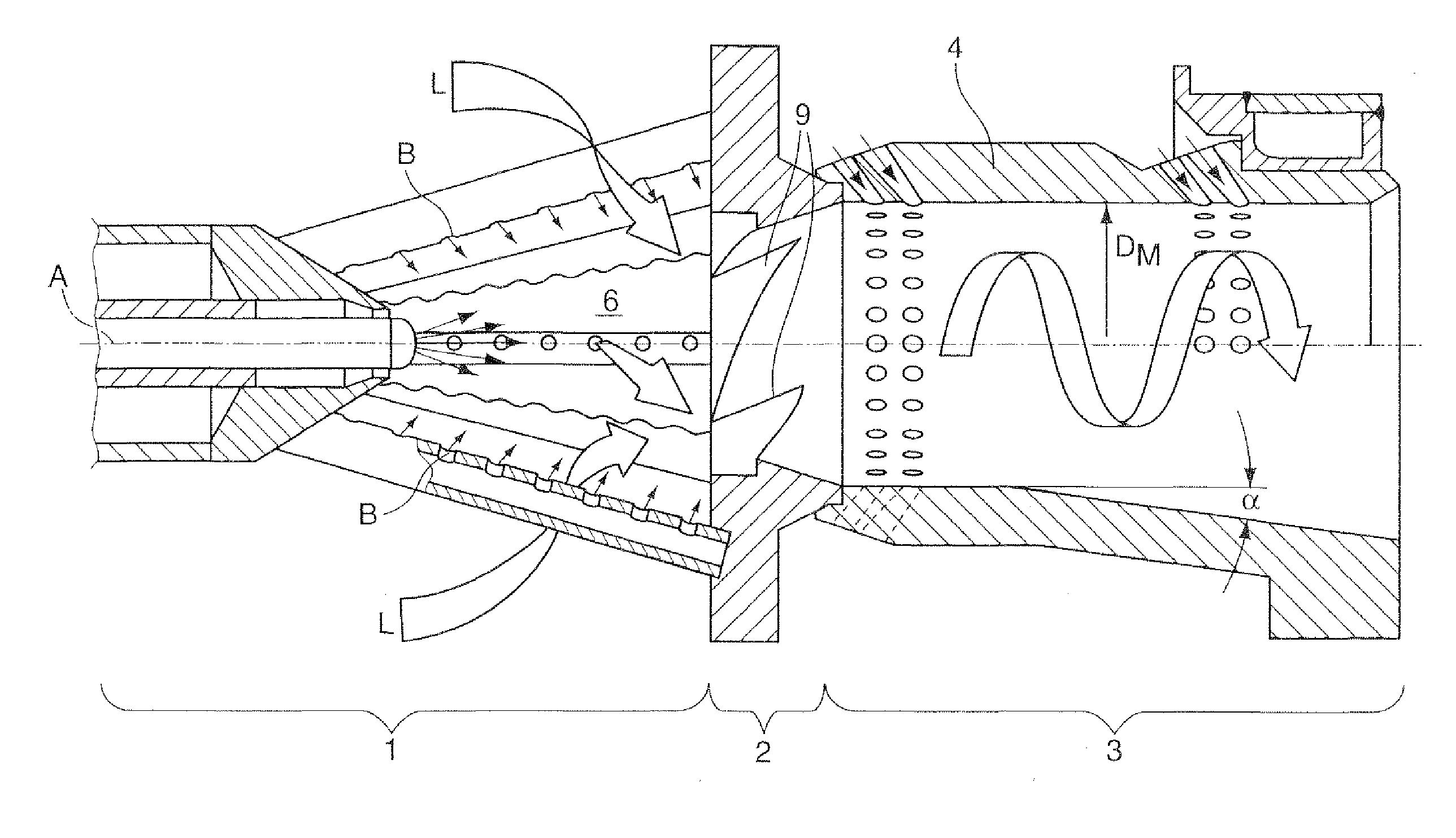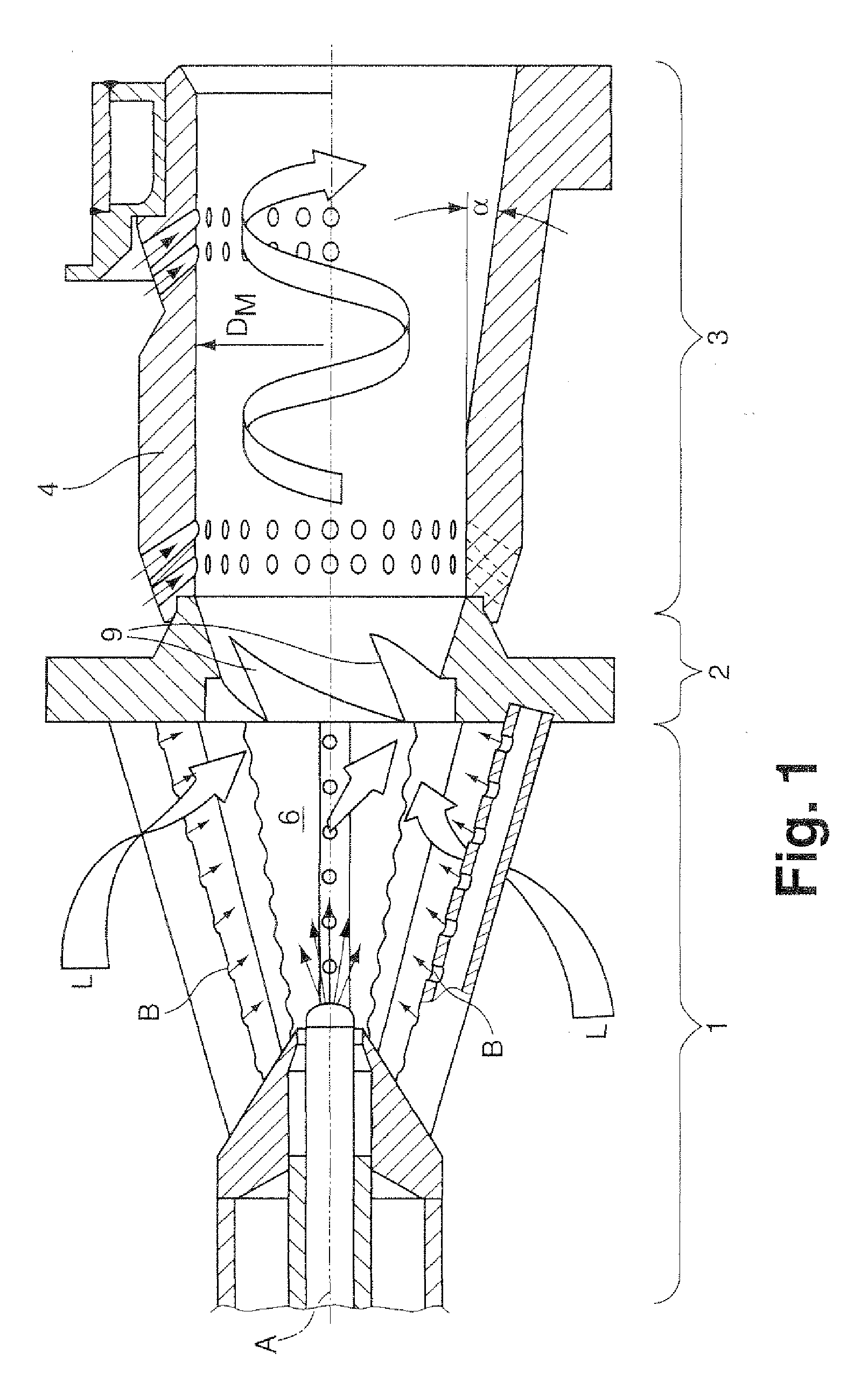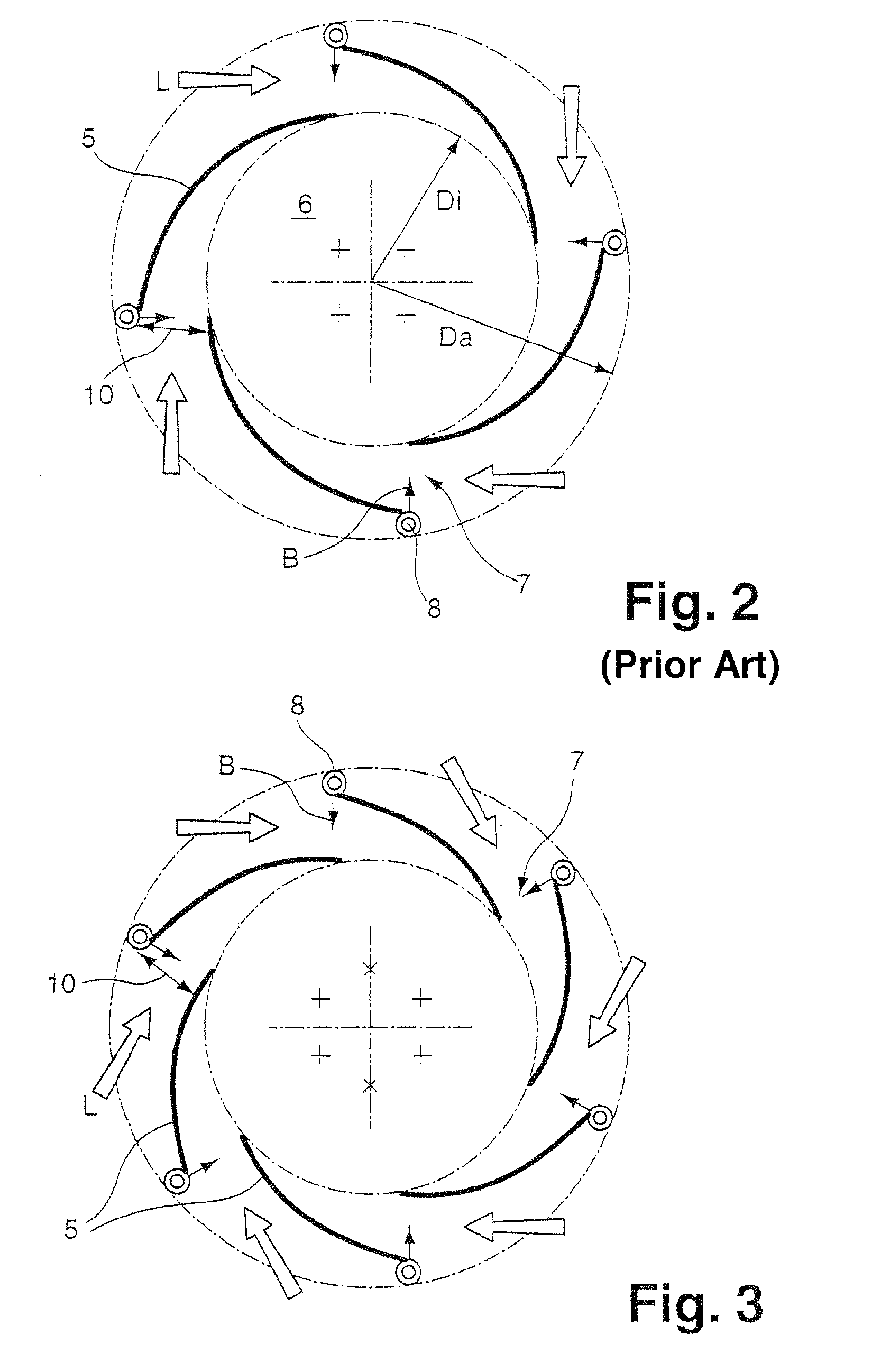Premix Burner
a burner and pre-mix technology, applied in the direction of burners, combustion types, combustion processes, etc., can solve the problems of high nox emissions, backflash occurrence, and increase the risk of so-called vortex chamber backlash, so as to reduce the flow velocity, reduce the risk of backlash being significantly reduced, and increase the pre-mix burner's swallowing capacity.
- Summary
- Abstract
- Description
- Claims
- Application Information
AI Technical Summary
Benefits of technology
Problems solved by technology
Method used
Image
Examples
Embodiment Construction
[0024] In FIG. 1, a longitudinal sectional view through a burner arrangement is shown, which burner arrangement basically has three sub-components: a conically formed premix burner 1, a transition piece 2, and also a mixing path 3 which is formed in the form of a tubular mixing element 4. The upper half of the longitudinal sectional view according to FIG. 1 represents an as known per se premix burner arrangement, with a vortex generator 1, the vortex chamber of which is encompassed by n=4 partial cone shells 5 which altogether define n=4 air inlet slots 7. A cross-sectional view of such a known vortex generator 1 is shown in FIG. 2. The four partial cone shells 5, which encompass an inner vortex chamber 6, are clearly apparent from this view. The four air inlet slots 7 define an outside premix burner diameter Da, and also an inside diameter Di which defines the size of the vortex chamber 6. In addition, the respective mutual spatial offset of the partial cone shells with regard to t...
PUM
 Login to View More
Login to View More Abstract
Description
Claims
Application Information
 Login to View More
Login to View More - R&D
- Intellectual Property
- Life Sciences
- Materials
- Tech Scout
- Unparalleled Data Quality
- Higher Quality Content
- 60% Fewer Hallucinations
Browse by: Latest US Patents, China's latest patents, Technical Efficacy Thesaurus, Application Domain, Technology Topic, Popular Technical Reports.
© 2025 PatSnap. All rights reserved.Legal|Privacy policy|Modern Slavery Act Transparency Statement|Sitemap|About US| Contact US: help@patsnap.com



